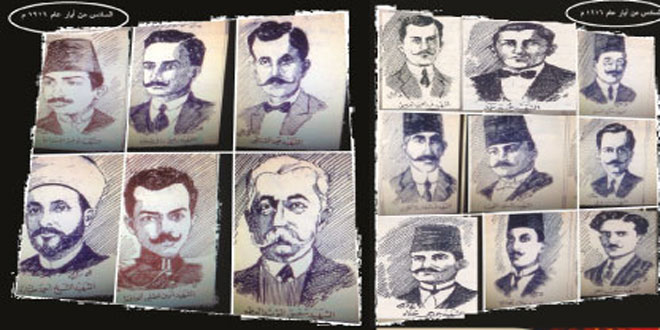Martyrs’ Day is of great importance in the Syrian memory. The sixth day of May, has always been dedicated to the memory of the martyrs of Arabism who were executed by Jamal Pasha (known as the blood shedder) during the years of World War I. Martyrs who died defending their Arab rights in an Ottoman state that was dominated by the tyranny of the Association for Union and Progress, which adopted the centrality of Turkish nationalism as the basis for a multi-ethnic and multi-religious state.
May 6, 1946, was the first national occasion that Syria celebrated after the evacuation of the last French military from it less than two weeks before, on April 17. Since then, the day has become an occasion to celebrate the martyrs of Syrian independence from France, and thus to be the oldest landmarks of the modern Syrian state.
What is the story behind Martyr’s Day and why did all these young men in both Syria and Lebanon die on May sixth 1916?
In 1915, Jamal Pasha led the Turkish Fourth Army to cross the Suez Canal and occupy Egypt.. On the night of February 2, 1915, it penetrated the Sinai desert, which at that time lacked transportation routes, thus leaving the Turkish forces utterly exhausted when reaching Suez Canal.The Turkish army was then successfully attacked by the British battleships in the canal or the British forces entrenched on the western bank of the canal with their cannons and machine guns. Only a few of the Fourth Army survived.
The abject failure of this campaign and the direct responsibility of Jamal Pasha for that failure, who was at that time the absolute military ruler of Syria, made him sharp-tempered, and he poured out his anger on the Arab military and civil leaders who held him responsible for his failure.This was why he worked to replace the Arab battalions in Syria withTurkish battalions.He also dismissed the prominent Arab officers from their jobs and sent them to distant regions, in addition to arresting the national leaders and Arab thinkers and abusing them and torturing them to death.
Jamal Pasha executed a group of Arab intellectuals from different cities of Syria and Lebanon. He accused them of various charges, ranging from communicating with British and French intelligence to get rid of the Ottoman rule, to working to separate from the Ottoman Empire.
He first referred their files to a customary court in Aley in Mount Lebanon, where the trial was conducted with extreme cruelty and injustice, and without achieving the minimum standards of fair and legal trials.
The death sentences were executed by hanging in two batches: one on August 21, 1915, and the other on May 6, 1916, in Al-Burj Square in Beirut, which was called Martyrs’ Square, and Al-Marjeh Square in Damascus.
Ahmed Jamal Pasha, , remained deluded, until the Ottoman Empire felt the results of his horrible policy and transferred him from Syria and appointed Jamal Pasha of Mersini instead.
Jamal Pasha the blood shedder was killed in the city of Tbilisi in 1921 by an Armenian named Estefan Zaghkian.
Editor In Chief
Reem Haddad

